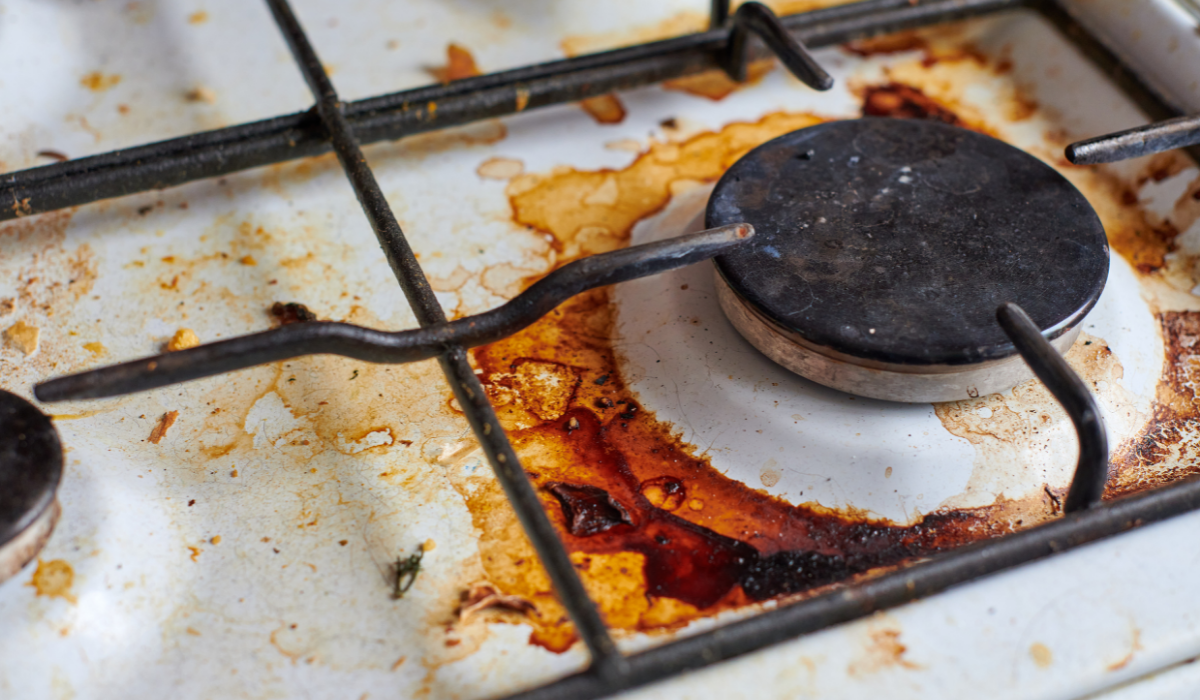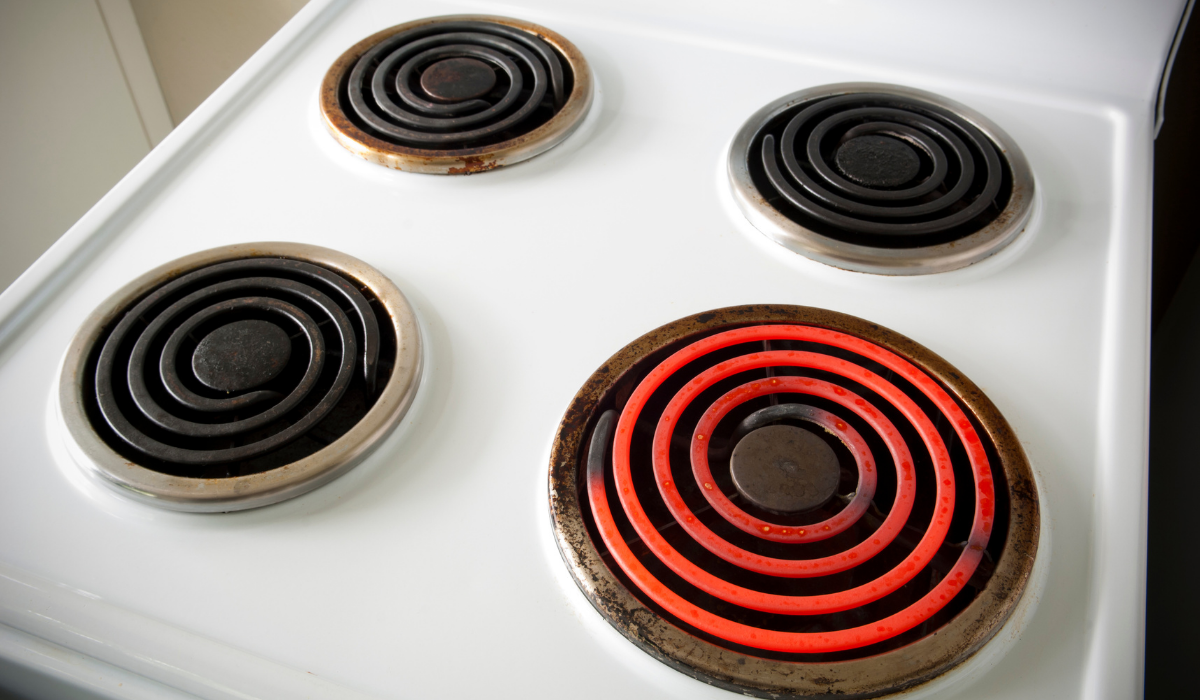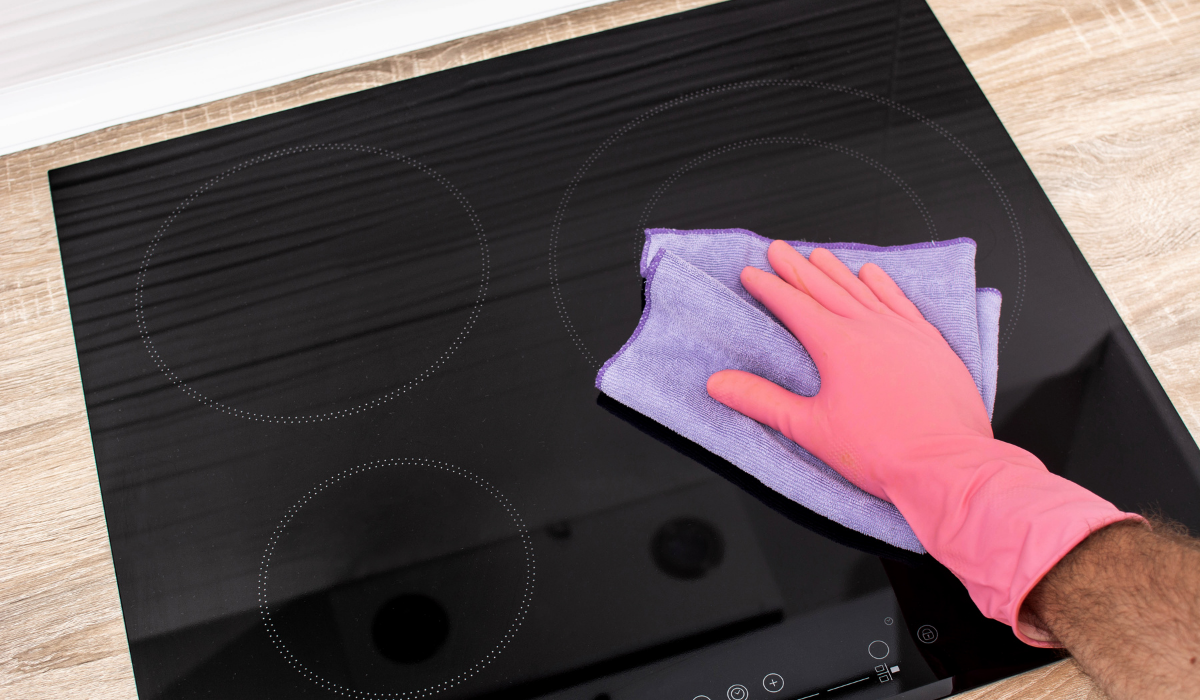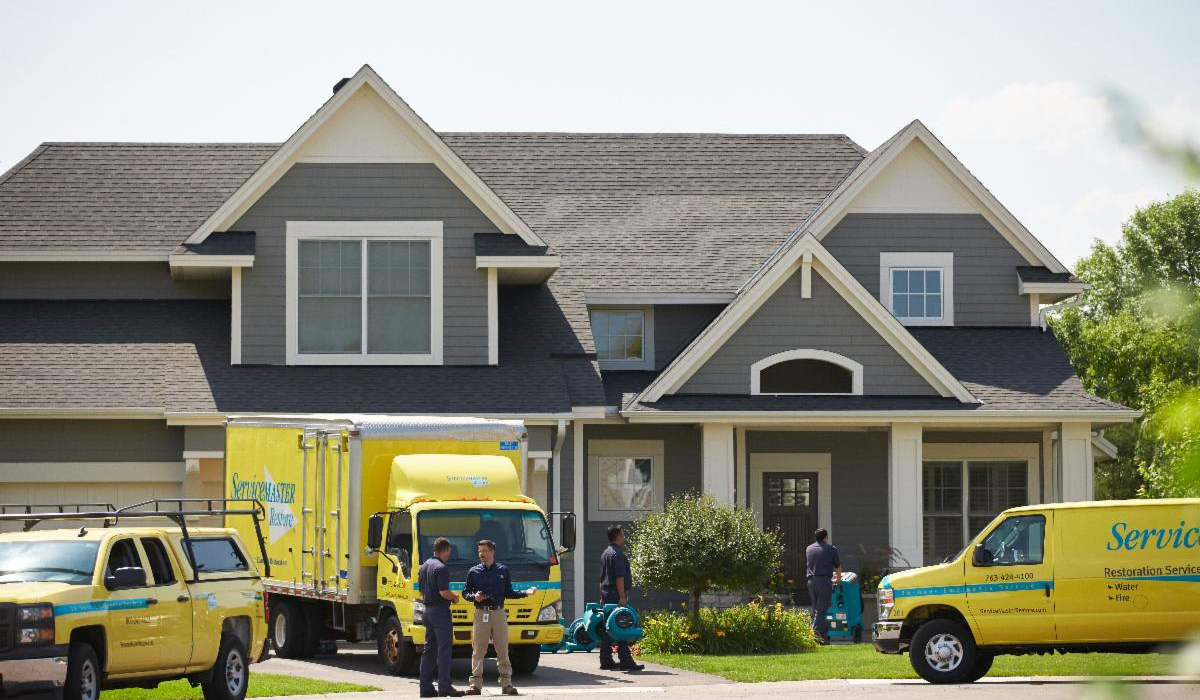Spills and splatters are likely to occur on the cooktop of a kitchen stove—even when a homeowner only cooks occasionally. Liquids can harden on a heated stove and make it tougher to clean. Here’s how to clean the cooktop of a kitchen stove, whether it’s gas, electric, or glass.
Even simple meals, from pasta to soup, create a mess on the stovetop. The salt in pasta water, for instance, leaves behind white streaks on the stovetop after it splatters. Droplets of tomato soup, bits of charred spinach, and pieces of burnt French toast will dirty the stovetop.
Frying potatoes in the skillet will likely leave splatters of oil all around the stovetop. The stovetop knobs may become slick with grease after handling them. Crumbs from frying breaded chicken will be scattered over the stovetop. Leftover food that lands on the stovetop flames is a fire hazard.
Clearly, it’s necessary to regularly clean the cooktop of the kitchen stove. Delaying cleanings will only cause the food to become baked onto the stovetop. Plus, cooking mishaps are the number one cause of home fires in the US. Help prevent a kitchen fire by keeping the stovetop clean.
How often the cooktop of the kitchen stove needs to be cleaned depends on how frequently it is used. Typically, a daily wipe down after cooking is adequate, as is a thorough scrubbing of the stovetop once a week. Routine cleanings prevent oils and foods from hardening on the stovetop.
Gas Stovetop
Gas stovetops, releasing a steady flame, continue to be popular. These stovetops feature removable grates and burner tops. Modern styles offer burners of all shapes and sizes. Cleaning a gas stovetop should obviously be done while the burners are cool.

Remove the grates and burner caps and soak them in a bowl of soapy, hot water for ten minutes. The soap and water should loosen any grime. The grates and burners are clean when they do not feel greasy to the touch or appear to have filmy stains.
Extremely dirty grates and burners caked with grease require an extra step. After washing with soap and water, apply a paste of one part vinegar, two parts baking soda, and five drops of dish soap. Allow the mixture to sit for 20 minutes, then scrub the grates and burners clean.
Electric Stovetop
Electric stovetops feature coils and cook using electricity rather than flames. Electric coil burners are also susceptible to sticky food residue. The coil burners should be removed from the stovetop prior to cleaning them. Unplug the burners and wipe with warm, soapy water.
When cleaning the electric coil burners, be careful to keep water away from the electrical connection. After rinsing, set the burners aside to fully dry. As they dry, wipe down the rest of the stovetop with a sponge. Reattach the electric coil burners once they are thoroughly dry.

Clean the areas underneath the cooktop, as well. Accumulating food particles and spilled liquids should be cleaned up. Use a damp sponge to wipe the area clean. If food stains are too tough to simply wipe away with a sponge, clean with soapy water.
Kitchen Fire is a common accident that has happened to numerous households. Read Residential Fire Damage Restoration – FAQs to learn how to protect your home from the occurrence of fire.
Glass Stovetop
Smooth and flat, glass stovetops are becoming increasingly popular. An extra advantage is that they are easy to clean. A simple wipe down, perhaps with a bit of vinegar, after cooking is sufficient to keep them clean. Tough stains require an additional tool: a single-edged scraper.
Stubborn buildups are effectively dislodged by scraping them with the single-edged scraper. Prior to scraping, soak the areas caked with food with a cleaner that is approved for glass stovetops. Allow the solution to sit, then gently scrape the gunk away. Press the scraper lightly to avoid breaking the glass.
A deep scrub utilizing baking soda and vinegar will further clean the glass stovetop. Spritz the glass stovetop with vinegar, then sprinkle baking soda over it. Submerge a towel in hot water and lay it over the stovetop for 15 minutes. Remove the towel and repeat to remove tough residue.

When cleaning a glass stovetop, use the soft side of the sponge, rather than the abrasive side, to avoid scratching the surface. Steel wool is also not advised, since it can leave deep pits on the stovetop in which food particles can become permanently stuck.
No matter what style of cooktop is being cleaned, a crucial safety measure is to clean it when it is cool. Keep spills from setting and becoming more difficult to remove by wiping them up immediately. Clean the stovetop often to prevent grease and dust buildup.
Grease buildup on the cooktop of a kitchen stove is flammable and therefore dangerous. As mentioned, cooking fires are the number one cause of home fires. If a kitchen fire occurs in your home, call ServiceMaster Disaster Restoration and Recovery immediately after the flames are extinguished by fire officials.
We are a recognized leader in fire damage restoration. Our skilled cleanup technicians are experienced in removing the soot and smoke stains from fire damaged properties. This is a crucial step, since soot and smoke damage can rapidly spread to other parts of the home and cause further ruin.
ServiceMaster DRR specialists work quickly to minimize the effects of fire damage. We are locally based, so our crews respond immediately to emergency calls. Our services also meet the needs of home and business owners who need content cleaning and pack-out services.

Fire damage is an emergency situation that requires professional attention. Working with the fire damage cleanup experts from ServiceMaster DRR is highly recommended, since incorrectly cleaning soot or smoke off the walls, upholstered furniture, or carpeting can worsen the existing fire damage.
When your home or business in San Francisco, California, is affected by fire damage, call ServiceMaster DRR. Our fire damage cleanup crews will arrive promptly, begin the restoration process and return your property to its pre-loss condition. Contact us 24 hours a day for quality fire damage cleanup.

Steve VanDenBerg is the owner of ServiceMaster Disaster Restoration and Recovery. He has over 30 years of experience working within the restoration industry and successfully leading start-ups, turnarounds, acquisitions and mergers, and rapidly growing companies.
Steve earned his BS in Business & Accounting from Calvin University in Grand Rapids, MI and began working for DSI Holdings as their Chief Financial Officer. When Steve began with DSI Holdings, they were running an underperforming ServiceMaster Restore franchise with one location. Steve implemented new policies and procedures for accounting and finance as well as a professional sales plan that increased profits eightfold over his time as the CFO. He was then promoted to President and CEO and in this time, he expanded the company from two locations with $4M in sales to 12 locations and $45M in sales. DSI Holdings became one of the largest disaster restoration companies in the U.S. and helped with major restoration projects throughout the U.S. and around the world.
Steve purchased ServiceMaster DRR in 2015 when the business was in decline. Drawing on his years of experience in turning around struggling ServiceMaster franchises, Steve overhauled our operations, including finance, sales, and marketing, which led to a quick turnaround. Within Steve’s first 24 months, sales increased by 60 percent. Steve also helped greatly improve our operating margins and established a relationship with California’s largest residential insurance company. Under Steve’s leadership, we have become one of the largest disaster restoration providers in California.
Steve has found great success in turning around struggling and stagnant restoration franchises by changing the business model and strategy, greatly increasing sales and profits. Many of the changes he has implemented have even been adopted by the franchisor into their operating model.



